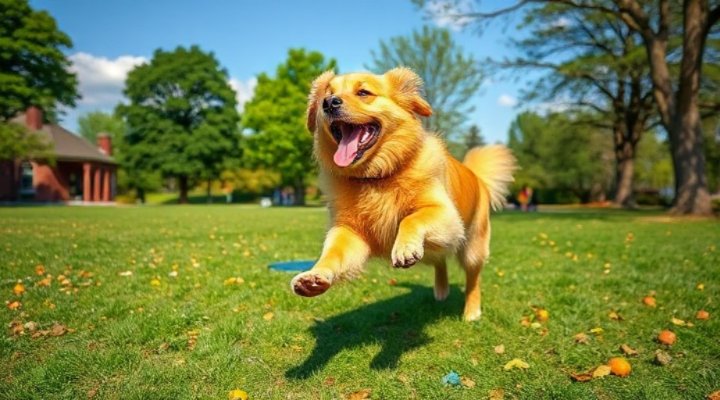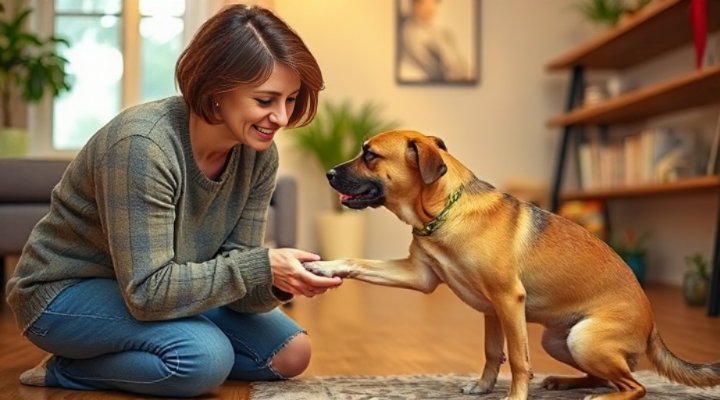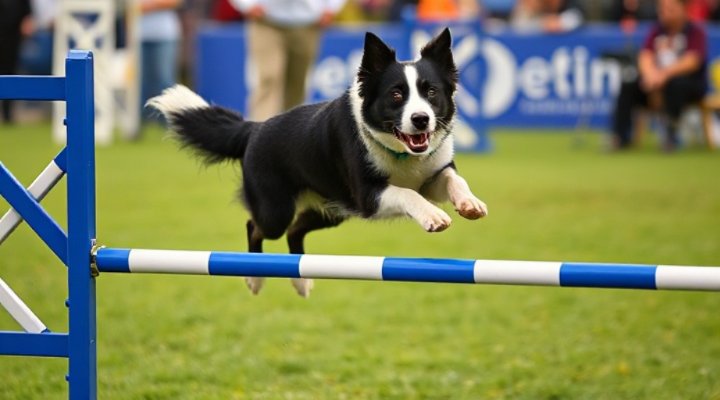Dog jumping is one of those behaviors that can be either adorable or annoying, depending on the context. That is to say, when your pup leaps joyfully to greet you after work, it’s heartwarming. However, when the same behavior is directed at your dinner guests or the elderly neighbor, it becomes problematic. In this comprehensive guide, we’ll explore both sides of dog jumping – how to encourage it for sports and how to discourage it when unwanted.

Understanding Why Dogs Jump
First and foremost, it’s important to recognize that jumping is a natural canine behavior. Puppies jump to reach their mother’s face, and adult dogs often jump when excited. For instance, my own Labrador, Max, used to jump like a kangaroo every time I picked up his leash! According to the American Kennel Club, this behavior stems from dogs’ natural inclination to get closer to our faces for greetings.
There are several reasons why dogs jump:
- Excitement and greeting behavior
- Attention-seeking
- Attempting to reach something (like food or toys)
- Instinctual behavior (especially in herding breeds)
Training Dogs Not to Jump: Basic Techniques
If your dog’s jumping has become problematic, don’t worry – there are effective ways to address it. Our article on how to teach your dog not to jump offers additional detailed techniques. Meanwhile, here are some fundamental approaches:

- Ignore the behavior: Turn away when your dog jumps, only giving attention when all four paws are on the ground.
- Teach an alternative behavior: Train your dog to sit when greeting people instead of jumping.
- Consistency is key: Ensure all family members and visitors follow the same rules.
- Positive reinforcement: Reward desired behavior with treats or praise.
Common Mistakes to Avoid
While training your dog not to jump, certain approaches can actually make the problem worse. For example:
- Pushing the dog away (they may interpret this as play)
- Inconsistent responses (sometimes allowing jumping, sometimes not)
- Yelling or punishment (creates anxiety without teaching alternatives)
Training Dogs to Jump for Sports
On the flip side, if you’re interested in dog sports like agility, you’ll want to teach controlled jumping. The USDAA provides excellent resources for sport-related training. Here’s how to start:

- Begin with low obstacles to build confidence
- Use a command like “over” or “jump” consistently
- Gradually increase height as your dog masters the technique
- Always warm up properly to prevent injuries
For puppies, it’s especially important to wait until their growth plates have closed before introducing high jumps. Our guide on best dog breeds for first-time owners includes information on breed-specific physical development.
Safety Considerations for Jump Training
Above all, safety should be your top priority when training jumping for sports:
- Consult your vet before starting any intensive jump training
- Use proper equipment designed for dog sports
- Watch for signs of fatigue or discomfort
- Build up intensity gradually

Special Considerations for Different Breeds
Different breeds have different physical capabilities and tendencies when it comes to jumping. For instance:
- Small breeds: May jump excessively due to excitement
- Herding breeds: Often jump as part of their working behavior
- Sighthounds: Naturally talented jumpers but need careful conditioning
- Large breeds: Need to be discouraged from jumping to protect their joints
If you’re unsure about your dog’s specific needs, check out our easy to train dogs article for breed-specific advice.
Troubleshooting Common Jumping Problems
Even with proper training, you might encounter some challenges. Here are solutions to common issues:
| Problem | Solution |
|---|---|
| Dog only jumps when excited | Practice calm greetings and use relaxation techniques |
| Dog jumps on furniture | Teach an “off” command and provide alternative resting spots |
| Dog jumps at the door | Train a “go to place” command for arrivals |
| Dog jumps during play | Use time-outs when jumping becomes excessive |
Remember, every dog is unique. What works for one may not work for another. Be patient and consistent, and don’t hesitate to seek professional help if needed. Our AKC trick dog training guide offers additional techniques that can help with impulse control.
Final Thoughts on Dog Jumping
In conclusion, dog jumping is a behavior that can be shaped according to your needs and preferences. Whether you want to discourage it completely or channel it into organized sports, the key lies in understanding your dog’s motivations and using positive, consistent training methods. Most importantly, have fun with the process – training should be enjoyable for both you and your canine companion!
Related keywords: dog training, jumping behavior, dog sports, agility training, canine behavior, positive reinforcement, dog obedience
